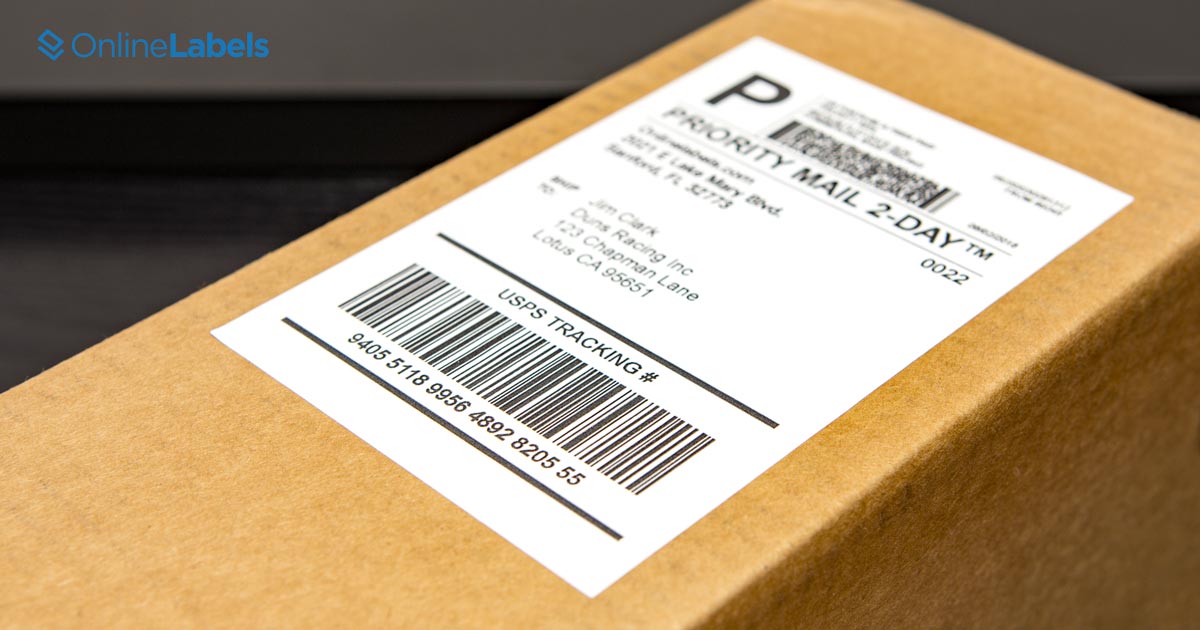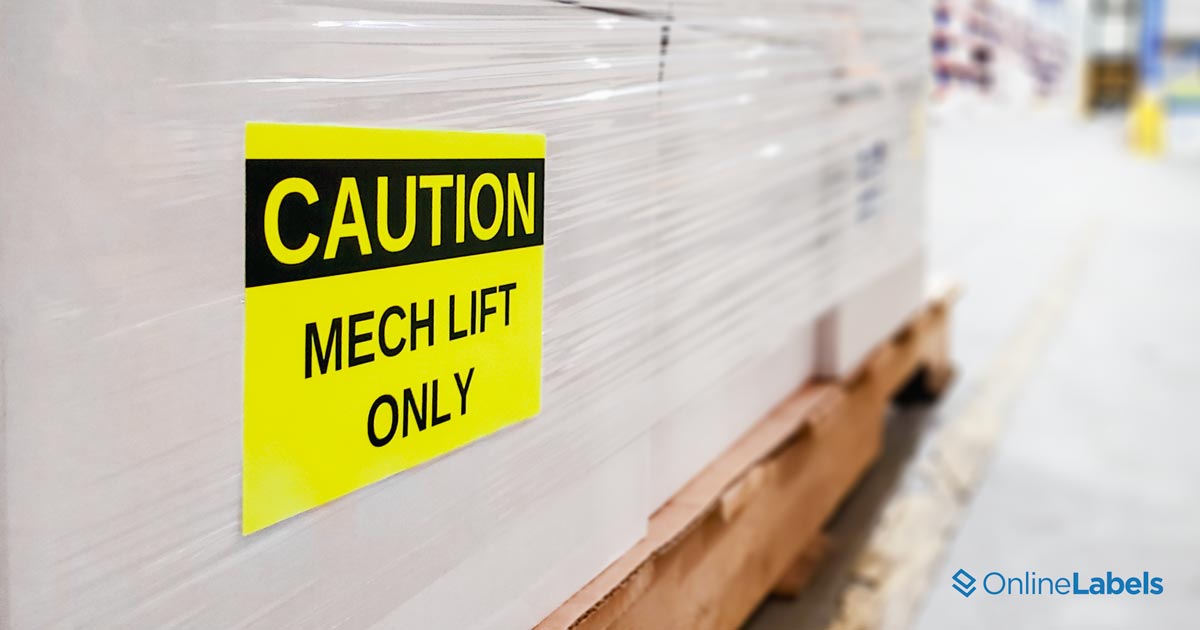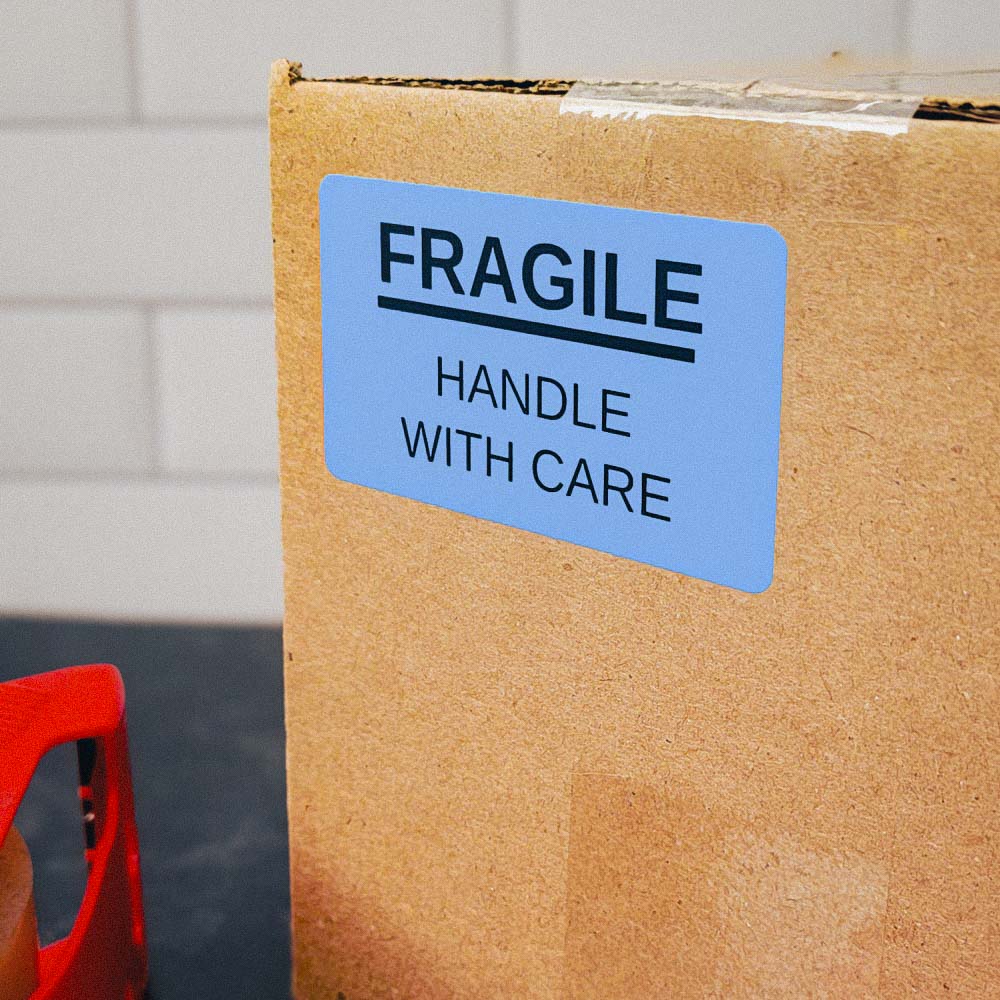Best Shipping Label Materials [Updated for 2025]

Selecting the right material for your shipping labels can be tricky. Whether you're a seasoned sender or just dipping your toes into the shipping world, understanding the various materials available can save you from label mishaps. Here’s a breakdown of your options to help you choose the perfect material for your next shipment.

Aggressive White Matte
Aggressive White Matte is bright-white paper-based material featuring one of our strongest adhesives. It’s ideal for hard-to-stick materials and containers, like corrugated boxes and textured materials. And depending on the time of year you’re making a shipment, your package can face harsh temperatures. Aggressive White Matte is designed to withstand extreme temperatures. So once you stick this label on, it’s not going anywhere! However, this material isn’t weatherproof, so if you’re concerned about your package experiencing water or moisture-rich environments, a weatherproof material is needed.
Key Takeaways
- Paper-based
- Aggressive adhesive
- Non-weatherproof

Standard White Matte and Recycled White Matte
Standard White Matte and Recycled White Matte labels are affordable choices for shipping labels. These paper-based options offer a clean and professional look, making them suitable for most standard shipping requirements. However, it's important to note that they’re not weatherproof, so caution should be taken when using them in harsher conditions. Nevertheless, if you're looking for a cost-effective solution that gets the job done, these labels are a great budget-friendly option to consider.
Key Takeaways
- Paper-based
- Non-weatherproof
- Budget options
Weatherproof Matte Inkjet and Weatherproof Polyester Laser
Weatherproof Matte Inkjet and Weatherproof Polyester Laser labels are highly durable and maintain excellent scannability, especially when barcodes are involved. These labels are designed to withstand various weather conditions, ensuring they remain intact and readable throughout transit. If you're shipping valuable items or need reliable tracking, weatherproof options are your go-to choice for maintaining label integrity and barcode scannability.
Key Takeaways
- Durable
- Barcodes are more likely to remain scannable throughout transit
Fluorescents
Fluorescent labels are incredibly visible and perfect for warning signs, but they may not be the best option for postage. The vibrant colors that make them stand out can interfere with barcode readability, potentially causing scanning issues during transit. So, while they’re great for grabbing attention, it's best to choose other label options for postage purposes.
Key Takeaways
- Highly visible
- Good for warning signs
- Not ideal for postage

Blockout
Blockout labels are a versatile solution specifically designed for laser printing. With an opaque adhesive side, they effectively block out any underlying text or images, making them perfect for covering up old shipping labels or any unwanted markings on packages. If you find yourself needing a fresh start or seeking to repurpose packaging, blockout labels are your best option for a seamless, label-renewing experience.
Key Takeaways
- Laser only
- Opaque adhesive side
- Perfect for covering up old shipping labels
Direct Thermal Labels*
Direct Thermal labels are a perfect choice for on-demand shipping. Specifically designed for thermal printing, these labels are a cost-effective option for frequent shippers. With no need for ink or toner, you can say goodbye to the hassle of additional supplies and embrace the simplicity of Direct Thermal labels for your shipping needs.
Key Takeaways
- Thermal only
- Great for on-demand shipping
- Efficient
- Durable and affordable if you ship frequently
- No ink or toner needed
Thermal Transfer Labels*
Thermal Transfer labels, like Direct Thermal labels, are designed for thermal printing. However, they require a ribbon for printing. If you need thermal labels that can withstand challenging conditions while offering design flexibility, these labels are the ideal choice.
If you’d like to learn more about the difference between Thermal Transfer and Direct Thermal labels, look no further.
Key Takeaways
- Thermal only
- Similar to Direct Thermal labels
- Requires a ribbon for printing

*Direct Thermal and Thermal Transfer labels are used with a desktop thermal label printer like a Dymo or Rollo.
Color Thermal Labels
Color thermal labels are thermal labels available in multiple colors. They can help with quick identification and logistic organization. They are compatible with direct thermal or thermal transfer printers, allowing them to print faster and produce less waste than sheets. However, it's essential to consider that the material might have a few limitations regarding exterior factors. They aren't weatherproof and can be damaged if the package is in contact with moisture. It can also have low resistance to heat and light, which can cause the ink to fade.
Key Takeaways
- Quick identification
- Non-weatherproof nor heat-protected
- Flexible for retail, healthcare, and logistics businesses

Materials to Avoid
When it comes to shipping labels, non-white materials can pose readability challenges. Labels with colors or patterns may make it difficult to read the important information on your label, leading to potential delays or misdelivery. Similarly, while removable labels may seem convenient, they can pose a risk of falling off during transit, resulting in lost or mishandled packages.
Furthermore, using glossy labels for postage can create scanning issues when using barcodes. The reflective nature of glossy surfaces can interfere with your barcode’s readability, leading to potential scanning errors. To ensure smooth processing and accurate tracking, it's best to opt for white, non-removable, and non-glossy labels when it comes to postage.
Key Takeaways
- Avoid non-white materials (hard to read)
- Avoid removable labels that may fall off during transit
- Avoid glossy labels when using barcodes (hard to scan)
Shipping labels are vital for shipping out packages, so it’s important to know which materials are best and which you should avoid. We hope this article was helpful for you as you choose a material for your labels.
Ready to get your own? Shop shipping labels today.



